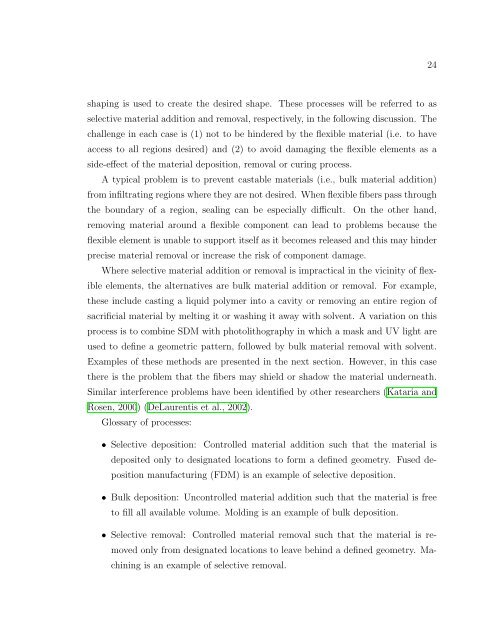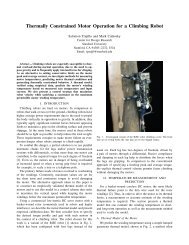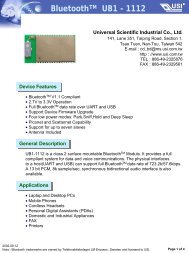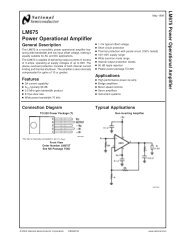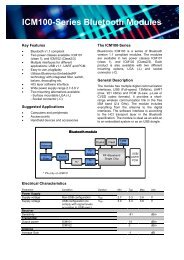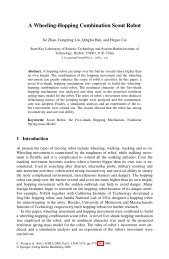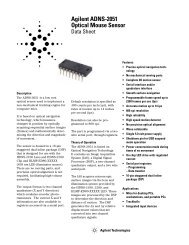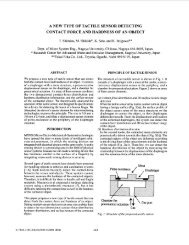design and fabrication of multimaterial flexible mechanisms with ...
design and fabrication of multimaterial flexible mechanisms with ...
design and fabrication of multimaterial flexible mechanisms with ...
You also want an ePaper? Increase the reach of your titles
YUMPU automatically turns print PDFs into web optimized ePapers that Google loves.
24shaping is used to create the desired shape. These processes will be referred to asselective material addition <strong>and</strong> removal, respectively, in the following discussion. Thechallenge in each case is (1) not to be hindered by the <strong>flexible</strong> material (i.e. to haveaccess to all regions desired) <strong>and</strong> (2) to avoid damaging the <strong>flexible</strong> elements as aside-effect <strong>of</strong> the material deposition, removal or curing process.A typical problem is to prevent castable materials (i.e., bulk material addition)from infiltrating regions where they are not desired. When <strong>flexible</strong> fibers pass throughthe boundary <strong>of</strong> a region, sealing can be especially difficult. On the other h<strong>and</strong>,removing material around a <strong>flexible</strong> component can lead to problems because the<strong>flexible</strong> element is unable to support itself as it becomes released <strong>and</strong> this may hinderprecise material removal or increase the risk <strong>of</strong> component damage.Where selective material addition or removal is impractical in the vicinity <strong>of</strong> <strong>flexible</strong>elements, the alternatives are bulk material addition or removal. For example,these include casting a liquid polymer into a cavity or removing an entire region <strong>of</strong>sacrificial material by melting it or washing it away <strong>with</strong> solvent. A variation on thisprocess is to combine SDM <strong>with</strong> photolithography in which a mask <strong>and</strong> UV light areused to define a geometric pattern, followed by bulk material removal <strong>with</strong> solvent.Examples <strong>of</strong> these methods are presented in the next section. However, in this casethere is the problem that the fibers may shield or shadow the material underneath.Similar interference problems have been identified by other researchers (Kataria <strong>and</strong>Rosen, 2000) (DeLaurentis et al., 2002).Glossary <strong>of</strong> processes:• Selective deposition: Controlled material addition such that the material isdeposited only to <strong>design</strong>ated locations to form a defined geometry. Fused depositionmanufacturing (FDM) is an example <strong>of</strong> selective deposition.• Bulk deposition: Uncontrolled material addition such that the material is freeto fill all available volume. Molding is an example <strong>of</strong> bulk deposition.• Selective removal: Controlled material removal such that the material is removedonly from <strong>design</strong>ated locations to leave behind a defined geometry. Machiningis an example <strong>of</strong> selective removal.


